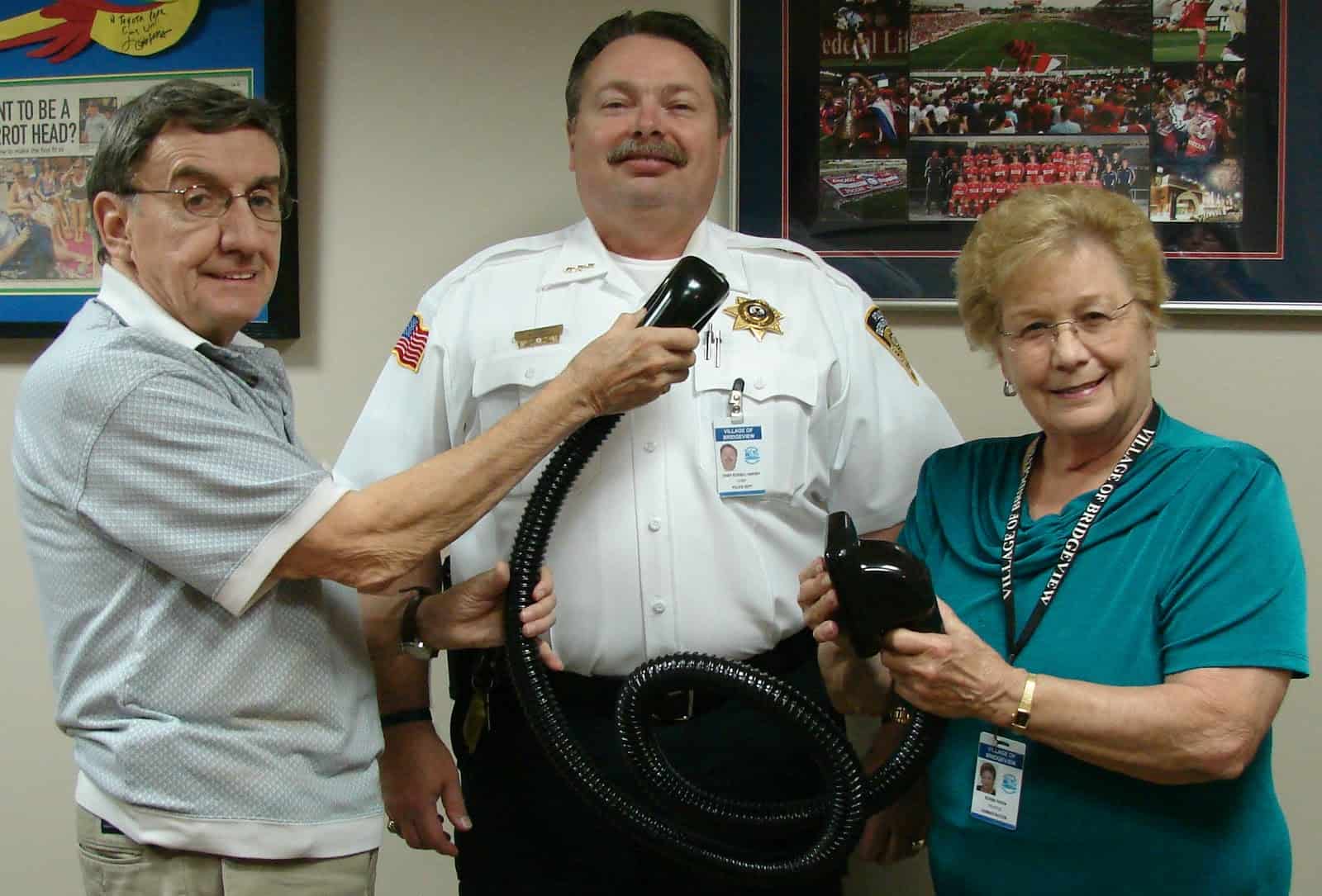Police Departments Must Get Officers to Wear Their Body Armor Far More Often
In 2018 a total of 47 law enforcement officers in the U.S. were shot and killed while on duty. This includes police officer Ronil Singh, 33, who was brutally gunned down on a routine traffic stop in Newman, California in the early morning hours the day after Christmas. These tragic deaths serve to remind us all of the serious dangers that U.S. law enforcement officers face every day as they work to protect and serve the rest of us.
According to statistics from the National Law Enforcement Officers Memorial Fund, a law enforcement officer’s job is extremely dangerous with one officer being killed every 53 hours in the line of duty. Even more astounding is that this number is on the rise. In 2011, 173 officers were killed, with 68 of them being killed due to a gun-related incident. Since the start of 2018, at least 24 law enforcement officers across the U.S. have died while on duty – with 16 of the deaths caused by gunfire.
What steps can realistically be taken to reduce the number of on-the-job fatalities among U.S. law enforcement officers?
It’s hard-hit reality to what officers go through each day when they put on the uniform and put the gun in the holster and hit the streets. There is good news though: a good number of these deaths are preventable with the help of bullet-proof vests.
Based on information from the Police Executive Research Forum, police who don’t use their body armor on a regular basis are 14 times higher to suffer from a deadly injury than officers who wear them. Although the wear rates of bullet proof vests are higher than before, one-third of all officers don’t wear them.
Why Officers Choose Not To Wear Bulletproof Vests?
There are a number of reasons why officers don’t use their bulletproof vests:
- Too heavy
- Too hot
- Too uncomfortable
Heat, comfort and weight are all reasons officers choose not to wear their vests every day. What can be done to get more officers to wear their vests?
3 Entities Working Together To Save Officers’ Lives
According to Point Blank Solutions, Inc. Vice President of Sales and Marketing Mark Smith, there’s a three-prong approach to increase the wear rates of bullet proof vests. They include:
- Police administration
- Bulletproof vest manufacturers
- Fiber developers
Smith said agencies should have a 100 percent wear rate of bulletproof vests as their goal because vests save lives. He said getting that 100 percent will need to be a join effort that includes all three entities.
1 – Safety Starts At The Local Level
Right now, just 60 percent of agencies demand their officers wear their bulletproof vests while on duty. The Bulletproof Vest Partnership is looking to raise those numbers and save lives and will reimburse up to 50 percent of the purchase price so long as the agencies getting the money have a written policy in place that demands officers wear their uniforms.
Fraternal Order of Police National President Chuck Canterbury said each agency should have mandatory wear policies in place because the reality is bulletproof vests do save lives. He said it should be the agencies, not the government, setting the policies, as blanket wear policies don’t disclose certain situations within the departments.
Canterbury said officers in the Deep South work often in 90-degree heat so provisions should be made for them not to wear their vests. Provisions should also be made for the officers who go undercover. There are just some scenarios where a vest is not needed, which is why policies should be figured out on a local level.
DuPont Protection Technologies North American Business Leader Jeff Fackler said the surefire way to make sure there is an increase in wear rates and a decrease in injury and death is for every agency is to have those mandatory wear policies for their active-duty street officers. But, the policies need to be outfitted to their specific needs.
Canterbury said the policies need to clarify the kind of bulletproof vests that’s required for each region. Administrators shouldn’t just look at money when trying to decide which vests are right for their officers. They should do their research to find the ideal vests.
2 – Safety Starts With Education
Another vitally important part in boosting the wear rate numbers is education. Since the mid-1970s, over 3,000 officers’ lives have been spared because of the bulletproof vests. It’s important officers understand why wearing their vests is so important to them, their family and their co-workers. It boils down to really one thing: each officer needs to commit to wear his/her vest.
Keep in mind that many people, at one time, would not wear their seatbelts because their viewed them as uncomfortable. Today, most folks understand the need to wear their seatbelt. This is the same issue with bulletproof vests.
There are a number of agencies with officers who don’t wear their body armor suits and look at them as keeping them from their jobs. With an influx of younger officers coming into the force and wearing their bulletproof vests, the rates will increase.
3 – Making The Fiber Better In Bulletproof Vests
There has been a significant amount of progress with the weight being taken from the fiber. And, because of this, more and more officers are opting to wear their bulletproof vests. When the weight is taken out of the fiber, manufacturers can create thinner, lither ballistic panels that help to boost comfort.
In 2003, Zylon fibers tarnished the reliability of bulletproof vests. What was learned about Zylon fibers was that they degraded quickly and didn’t protect officers as time passed. It was a black eye to the industry, which lead to more stringest testing from the National Institute of Justice.
Developments from a number of companies have helped bulletproof vests manufacturers to produce vests with weights that approach levels under NIJ’s standards.
With Level 2 vests, weights are under where they were initially under the previous NIJ standard. Not too long ago, Armor Express released a .81 pounds per square foot vest that meets all NIJ Standard-0101.06 requirements.
There are a number of packages that sport one to one and half pounds per square foot with some packages going as low as .76 pounds per square foot… all thanks to more durable, stronger fibers made by the fiber manufacturers.
Manufacturers play a critical role in the production of bulletproof vests, which is why they need to do research and development on materials to ensure that the body armor is comfortable and lighter without giving up the protection.
Testing Requirements For Bulletproof Vests To Ensure Comfort
According to the NIJ Standard-0101.06, vests must undergo more stringent testing including the following:
- Increase of test velocities for Types II, IIA and IIIA vests
- Increase in amount of shots under each vest to determine reliability
- Test panels will need to pass the submersion test in 70-degree water for 30 minutes before test commences
- Aggressive shot pattern
- Test must be conducted after rapid aging process
- Panels must be heat-sealed, not stitched and be inside water-resistant fabric so that the panels have a high moisture resistance level (Zylon would degrade when it was exposed to moisture.)
Manufacturers are required to meet these demands while also ensuring officers are comfortable wearing the vests. Manufacturers, to meet the NIJ requirements, will need to push past them and ensure that the products will also surpass the requirements demanded from the DEA and FBI agencies to stop bullets from injuring or killing officers in the line of duty.
Another Issue For Bulletproof Vests Manufacturers: Dealing With Heat
One of the biggest issues body armor manufacturers have a problem with is heat. A big number of officers will not wear their vests when it’s hot outside because it’s just too uncomfortable for them. However, one research lab is working to change all that. Empa, in conjunction with Unico Swisstex, developed a Kevlar vest with a built-in cooling system.
The Kevlar vest has an integrated cooling system – coolpads that are loaded with water and a small fan that circulates air through the fabric spacer located behind the pads. These things will cool the vest and its wearer.
Of course, it does come with its challenges to create:
One challenge was to create a fabric spacer that would stay stable under pressure, soft and flexible while making sure it gave no resistance to airflow. Since there was yet to be a small enough fan to be included in the vest, researchers at Empa came up with rechargeable miniaturized fans. Empa researchers needed to develop fans that were not only small but took very little power to work and provided a steady stream of air for ventilation.
A second challenge was that the vest’s original coolpads had to be refilled each hour. However, Empa created a portable filling station that could attach to the vest with a rapid-release fastener. For officers, the original coolpads were inefficient, which was why Empa created a flexible bottle that could be filled with water and increase cooling time for up to three hours.
The vest was tested in 2011 by Zurich City police officers and many were pleased by the results.
Canterbury said this development is huge in terms of how many officers wear bulletproof vests now and how many officers wear them after the release. With improvement in armor, decrease in weight and relief from heat, the rate of officers wearing bulletproof vests will increase.
And, when this happens… the number officers saved in the line of duty will also increase. That means more police officers will be going home to their families in one piece, not in a body bag.









